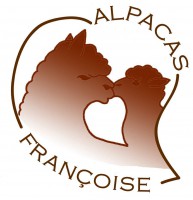FAQ
What is an alpaca?
Alpacas are domesticated members of the camelid family, which makes them a cousin of the llama, vicuna and guanaco.
They grow to about 1m at the shoulder and weigh around 70kgs. They can live up to 20 years and will breed for most of their life, having a single cria every 11.5 months (twins are very rare). Alpacas have been farmed for thousands of years for their luxurious fleece, and they have become popular investments and pets throughout the world.
What are the different types of alpaca?
There are two breeds of alpaca. The most common being the Huacaya (wah-kai-ya) which makes up about 96% of the population. Huacayas have a 'teddy-bear' appearance with fleece that resembles sheep's wool. The rarer breed is the Suri (soo-ree) which has long hanging locks of fleece often described as 'dreadlocks'. Alpacas come in 22 natural colours, from white through fawn and brown to black and grey.
What is alpaca fleece like?
Alpaca fleece was treasured by the ancient Inca civilisation and reserved only for Incan royalty. It was known as 'Fibre of the Gods' because of its amazing qualities. Alpaca fleece is softer, warmer, stronger and lighter than merino wool. It is super-fine and contains almost no grease/oil/lanolin and has less prickle factor than other fibres. The fibres do not retain water and can resist heat. The fibres retain their luxurious sheen even once processed. The fleece is in high-demand in the apparel industry and commands high prices. The potential for the apparel industry is huge for both manufacturers, spinners and weavers. A fibre that is fine, yet soft, with a high comfort factor and excellent thermal qualities will surely endear itself to the discerning public and ensure a successful future for the alpaca industry.
How do you look after alpacas?
Alpacas are relatively easy to look after compared with most other livestock. Usually, 4-6 alpacas can be accomodated on an acre depending on diet and management. Alpacas must be kept with other alpacas or they will become very stressed. Generally, access to pasture, hay and fresh water will keep alpacas content. Their basic care includes annual shearing, toe-nail trimming seasonally, yearly vaccination, winter AD&E supplement and drenching if necessary. They do not require special fencing or elaborate shelter. Unfortunately, alpacas are susceptible to facial eczema and rye grass staggers. However, they do not suffer from flystrike and footrot or need tail docking and crutching.
Why do people have alpacas?
Alpacas continue to be a vibrant and stable investment. They have held their high prices for over 20 years. In New Zealand at the 2009 National Alpaca Expo & Sale the top-priced alpaca sold for $40,000 however prices for other elite animals have reached well over $100,000 around the world. The fibre industry is still growing. Several mills around the country process alpaca fleece and the fibre is in high demand locally by craftspeople and internatonally by the prestigious fashion houses of Europe. Alpaca fibre garments featured at the 2010 NZ Fashion Week by the designer Laurie Foon of 'Starfish'.
Also, alpacas have become a very popular lifestyle block choice. Their exquisite looks, endearing nature and low maintenance appeal to their owners. Wethers (castrated males) are the most common pet alpaca - refer to our for sale page.
How did alpaca farming start?
Alpacas have had a turbulent history. Treasured by the ancient Inca civilisation, their fine fleeces were reserved for Incan royalty. Together with their close relatives, the llamas, alpacas provided clothing, food, fuel and, no doubt, companionship as domesticated animals high in the altiplano of Peru, Chile and Bolivia.
A thriving economy existed, based on selective breeding and the production of alpacas that were far superior to even the finest alpacas of today. Unfortunately, in 1532 alpacas were close to annihilation after the Spanish conquest of the Incas. The alpaca, prized for almost 5000 years as a source of high quality fibre, was seen by the Spaniards as a competitor for grazing lands available to their sheep. The alpaca therefore became a source of meat and was slaughtered almost to the point of extinction.
The surviving Incans were driven into the highest parts of the inhospitable Andes mountains, taking their most prized alpacas with them into exile. The alpaca population only survived due to their great importance to their people and their ability to tolerate extraordinarily harsh climatic conditions.
It wasn't until the mid 1800s that the beauty and resilience of alpaca fleece was 'rediscovered', sparking interest around the world. Sir Titus Salt of London "discovered" the remarkable fibre of the alpaca and began promoting its use in the finest textile mills and fashion houses of Europe.
Today, alpaca farming is still concentrated in the Altiplano. Alpacas not only battle a harsh climate - burning sun by day, freezing conditions at night - but also receive few of the benefits of modern animal husbandry.
In 1987, New Zealander Ian Nelson pioneered the way for exportation of alpaca out of South America to become possible. Today, New Zealand has approximately 16,000 animals, UK 14,000, America 60,000 and Australia over 100,000, the largest alpaca population outside of South America which has around 3.5 million (approximately 90% of the world's alpaca population).





